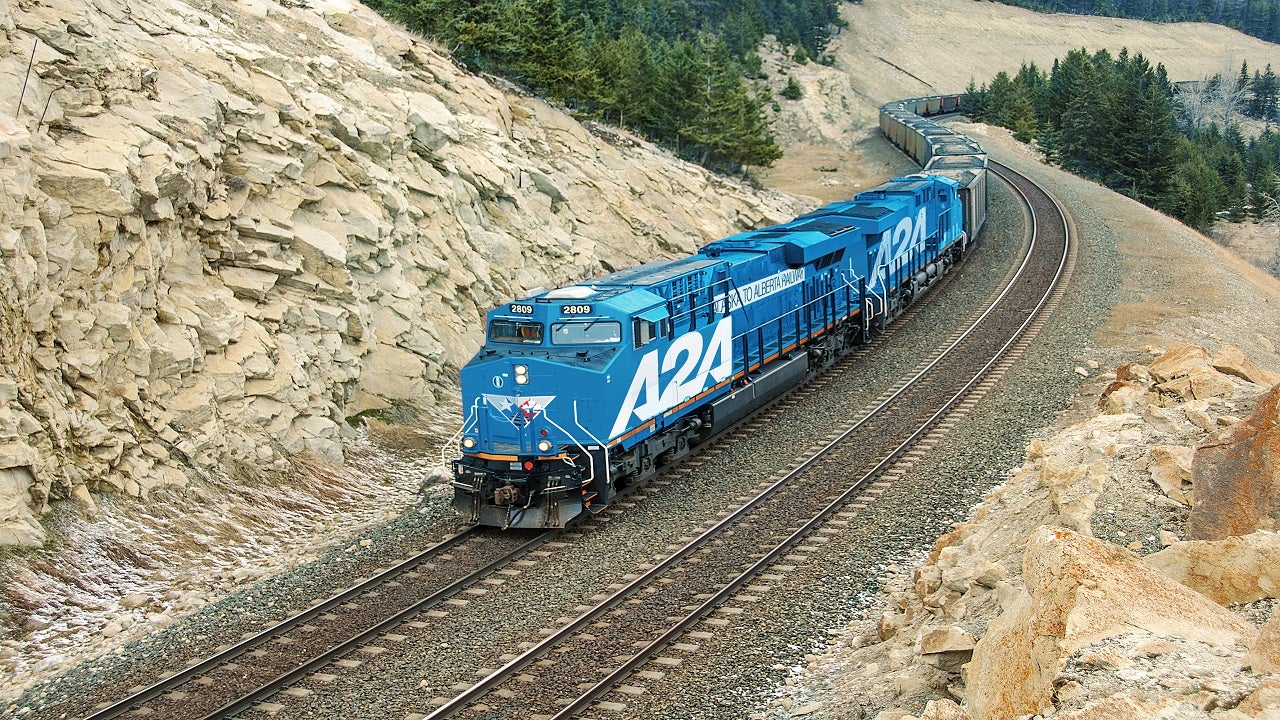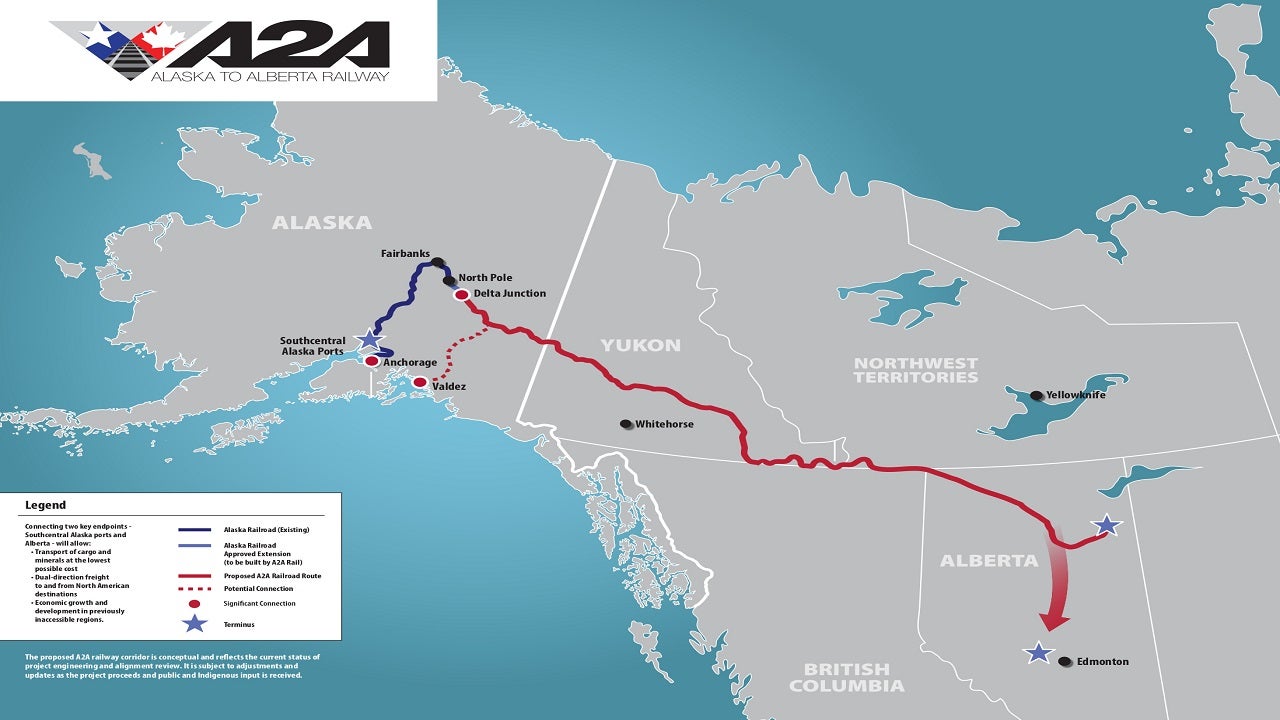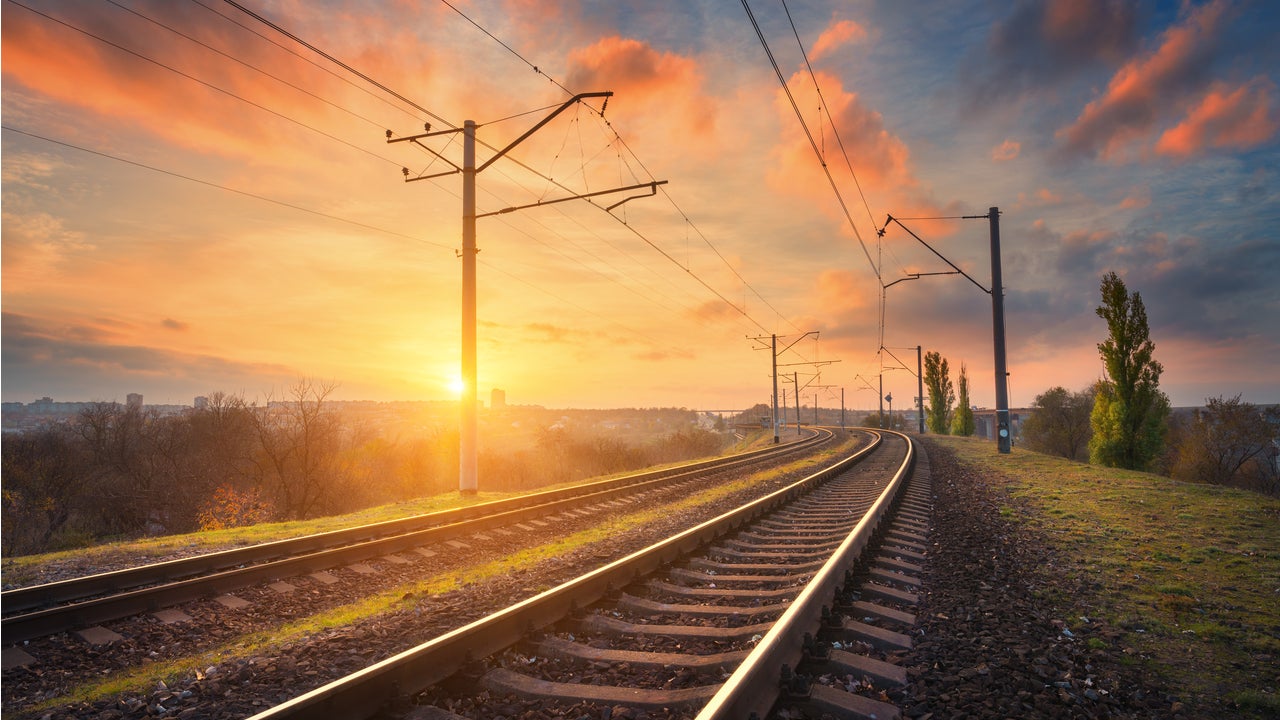Alaska-Alberta (A2A) rail corridor is a proposed rail network that will connect the US state of Alaska with Alberta, Canada. The route will link the deepwater ports and the existing railway network of Alaska to the Canadian railway system.
The new railway line aims to provide safe, modern, and efficient transportation for bulk commodities such as grain and ore, in addition to containerised goods and passengers.
The project is being developed by the privately owned Alaska-Alberta Railway Development (A2A Rail).
Construction of A2A rail corridor is expected to be completed by 2025, and the railway will be fully operational in 2026.
Alaska-Alberta (A2A) rail corridor development
Surveying activities for the project began in July 2020. Early field activities and detailed engineering works are expected to commence in late 2020, while soft construction will start by the end of 2020.
The project received the presidential border crossing permit from the US President Donald Trump in September 2020. The US and Canadian regulatory processes will include the development and submission of an environmental impact statement (EIS) along with engagement with indigenous communities, agencies and interested parties.
A2A Rail entered a master agreement with Alaska Railroad for cooperation on permission, selection of the right of way (ROW), economic terms, and approval to operate on their track and to extend some sections of their system.
The company will also work with the US Surface Transportation Board (STB) for necessary permits and licences.
Alaska-Alberta (A2A) rail corridor details
The railway line will have a length of 2,570km, of which approximately 321km will exist in Alaska, while the remaining 2,253km will fall within the western and northern parts of Canada. It will be connected to the Delta Junction (current-approved endpoint of the Alaska Railroad), from where the trains will link the tidewater ports of Southcentral Alaska.
The A2A corridor will be a heavy haul standard gauge railway that will transport general cargo, bulk dry and liquid cargo, bulk cargo, refrigerated cargo, roll-on/roll-off cargo and container cargo, as well as passengers.
It will also be used to transport non-hazardous goods safely with the help of advanced technology. The rail system will be equipped with positive train control (PTC) along with heat detectors to predict mechanical issues. Additionally, the project will install fibre optics to enable continuous communication and monitoring.
Construction will begin from North Pole city near Fairbanks, Alaska and will extend towards the south and east through Alaska and enter Alberta through Yukon and the Northwest Territories (NWT).
The infrastructure of the corridor, including the bridges, culverts, and tunnels, is designed as per the environmental and operational requirements.
Financing for Alaska-Alberta (A2A) rail corridor
The A2A rail corridor is estimated to cost more than C$22bn ($17bn), including C$7bn ($5.2bn) for the Alaskan segment and C$15bn ($11.2bn) for the Canadian section.
It will deliver steady-state revenues of more than C$4bn ($3bn) a year to cover the operational and capital costs.
A2A Rail already invested more than $100m in the pre-feasibility, feasibility, and detailed engineering phases of the project.
The company plans to secure financing from private investors, infrastructure funds, and sovereign wealth groups for the upcoming phases of the project. It will also analyse options for the government-issued grants and loan guarantees in both the countries for the risk capital.
Benefits of A2A rail corridor
The railway project will connect North American transportation networks and world markets. It will reduce fuel usage, environmental impacts and improve safety by employing lower railway grades (generally 1%) and curvature.
The project will provide bi-direction freight transportation to and from North American destinations and better access to previously inaccessible areas in the region.
The Alaska-Alberta rail corridor will prove beneficial for the US as well as Canada by enabling trade between the two countries and also with Asia.
The rail route will facilitate expanded production and movement of goods and resources from the north to global markets through Alaska ports. It will cut shipping times between North America and Asia by two to four days.
The railway corridor will generate more than 28,000 jobs in the impacted states and provinces and lift the average incomes in the regions along the railway by up to 40%.
It will also contribute to a $60bn increase in the cumulative GDP of Alaska, Alberta, Yukon, and NWT by 2040.
By linking south-central Alaska with north-west Canada, the route will establish railway access to the Canadian region. It will also reduce the transportation cost in north-west Canada and transit across the Pacific.
Contractors involved
A2A Rail commissioned HDR for detailed land surveying in Alberta in July 2020. HDR will work with local contractors, including geospatial analytics specialist Quantum Spatial and surveying services firm Lawson to deliver the contract.
The Van Horne Institute (VHI) was engaged by the Government of Alberta to evaluate the feasibility of rail transportation. Released in 2016, the viability study is being used by A2A Rail to perform works related to the project.




